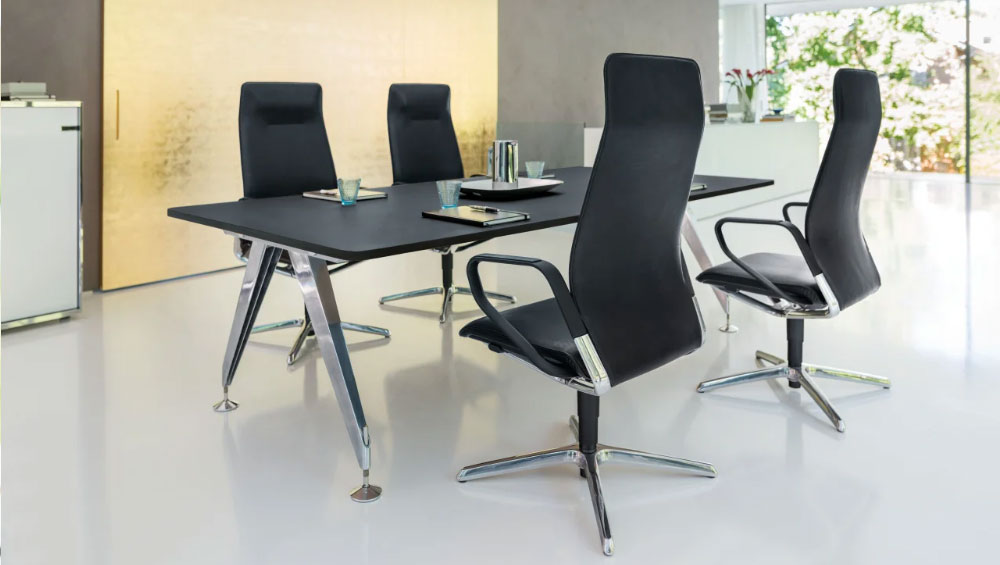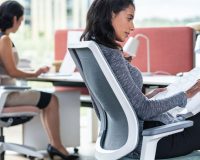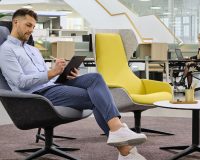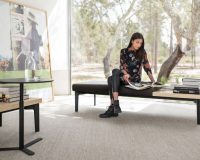At the 1983 International Design Conference in Aspen, Steve Jobs delivered a speech addressing the theme of the conference; The Future Isn’t What It Used to Be. In it he set out his thoughts on new technology, intuitive design, personal computing as well as the need for a constantly evolving idea of what the future will look like. The audio from his presentation is below.
This was a few months before the launch of the first Apple Macintosh but the philosophy and intent are all there. Describing the new user interface on this new generation of desktop computers, Jobs said: “The main thing in our design is that we have to make things intuitively obvious. People know how to deal with a desktop intuitively. If you walk into an office, there are papers on the desk. The one on the top is the most important. People know how to switch priority. Part of the reason we model our computers on metaphors like the desktop is that we can leverage this experience people already have.”
What Jobs was addressing in his talk was how the adoption of new tools and new ways of doing things depends as much on aesthetic and interface design as it did technology. Apple products had to be familiar to people from their past interactions with the physical world and other tools, even if that consisted of just a pen and paper. The technical term for this, and one that has become synonymous with Apple is skeuomorphic design.
Skeuomorphic is a term most often used to describe the design of interfaces that draw on a cultural association or the experiences of users. Some of the most well-known examples include the recycle bin icon on desktops, the floppy disk icon to save Word documents and the envelope symbol for email. The principle draws on these experiences to indicate functionality and endure long after the original tool has become obsolete. People who have never used or seen a floppy disk know that its image stands for the save function.
Steve Jobs believed computers should be so simple to use that a complete novice could master them based on instinct and familiarity alone. Over time, Apple has gradually discarded its original reliance on such ideas as users have grown accustomed to the new interfaces. Like technology, skeuomorphic design feeds on itself as it evolves.
Digital publications may mimic the page turning and gestures from printed publications but this can invert over time, as anybody who has ever seen that footage of a toddler trying to get a magazine to behave like an iPad knows.
Design led
Job’s insight is backed by the science. In his seminal 1988 book The Design of Everyday Things, the cognitive scientist Donald Norman suggests that the way we interact with objects and our surroundings is determined primarily by their design. He bases this conclusion on the fact that people are a constant and it is the design of the things they use that determines how well those things work.
People can learn how to use things differently and better, but without an underlying intuitive approach to design, the product will fail to some degree or other. Norman argues therefore that the designer should focus their attention on the interaction between people and the design of objects and surroundings, just as Jobs argued.
This principle becomes more relevant with each passing day, as the number of interactions we have with designed objects increases. This is most obvious with regard to our interactions with technology, but it is also apparent across our entire lives, including in the office, its layout and the products with which it is furnished.
So, we should find our interactions with design to be immediate and coherent. This expectation has now extended to our surroundings as well as discreet objects and technology. We have neither the time nor inclination to learn how to use something, when a better design would make it immediately obvious.
In terms of workplace design, the greater use of shared and public space means this not only includes the design of specific items of furniture but also the overall design of the workplace. If we want people to move to the space best suited to their needs, then the workplace must make the purpose and functioning of its elements obvious to them. In other words, it must behave more like one of their favourite devices, and its individual spaces more like an app.
Changing expectations
Perhaps the most striking development in the world of work in recent years is the expectation of choice. An idea that has been developing for a quarter of a century is crystallising around the principle that people should be free to choose where, when and how to work and with whom. The return to work following lockdown makes this more important than ever.
Since 2014, all employees in the UK have had a legal right to request flexible working and many have taken up that right, just as many firms have applied flexible working themselves to attract and retain talent, find new ways of working, cut costs and improve the productivity and wellbeing of workers. Those numbers will inevitably increase.
One of the commonly held narratives about this development is that these people will work from home instead of a traditional office. The reality is that rather than a switch from one fixed place of work to another, the majority of people will have some degree of choice and many still opt to work from an office for a large part of the week and a number of reasons, far from the least of which are a sense of belonging the ability to interact with colleagues. It is not a binary choice.
This is driving a fundamental change in the way people use the workplace. When they see it as one of a number of options of where to work, it must compete with many of the characteristics of its alternatives. The intuitive design of the workplace must reflect the same skeuomorphic principles that define the design of so much technology by tapping into the cultural and learned experiences and expectations of the individual.
The use of a range of settings for people to work, is drawing inspiration from other spaces to indicate their function and the products themselves reflect this diversity. We have understood many of the principles that apply to this process for decades, but it is only now as the world of work changes fundamentally that we are able to appreciate and apply them fully. As long as humans remain at the heart of workplace design, we will be able to find better ways to design spaces for them.








